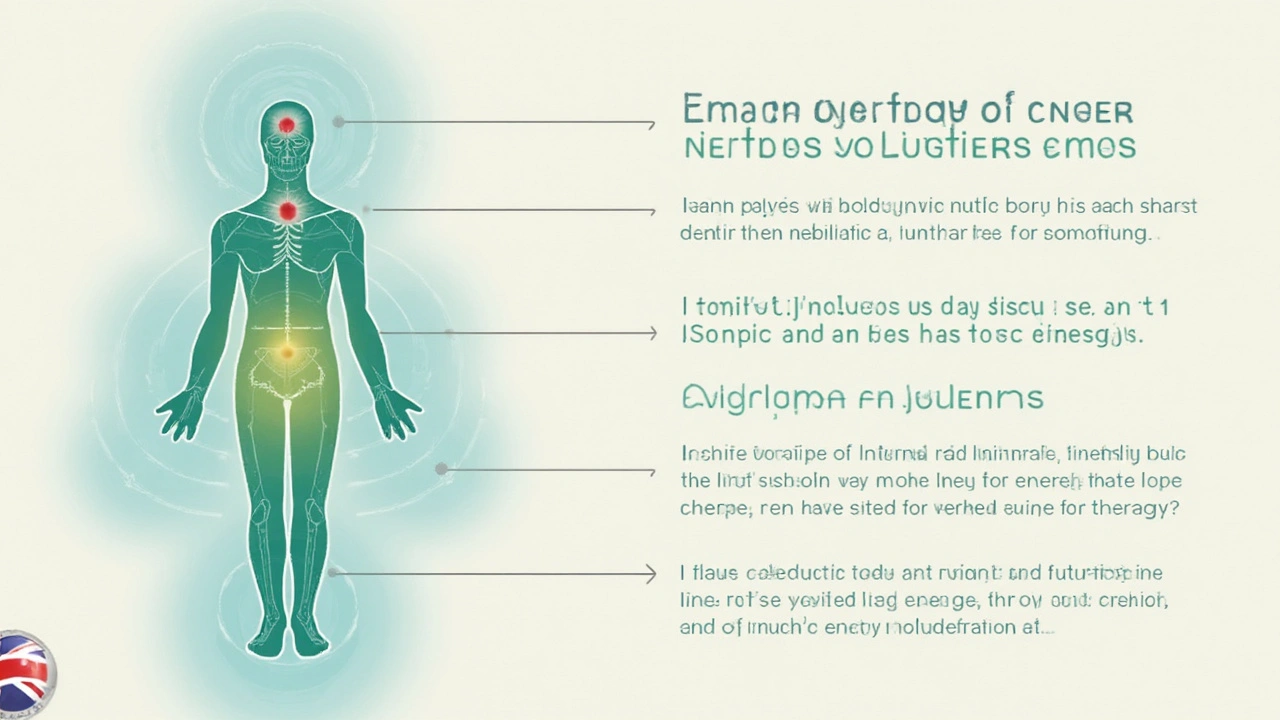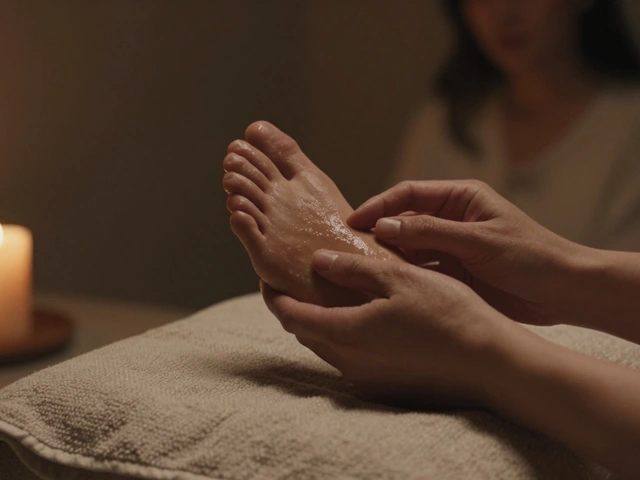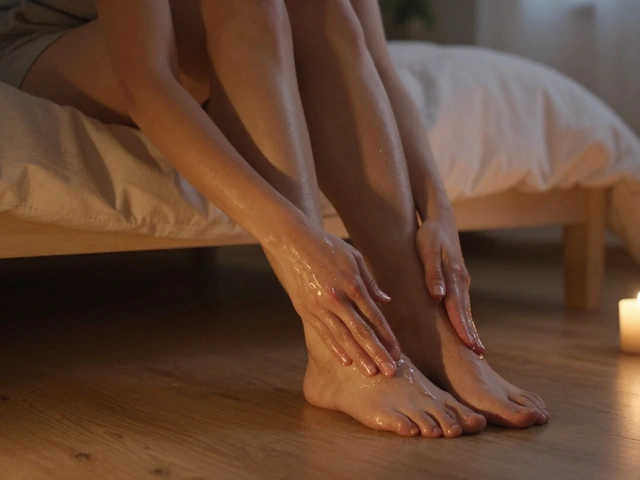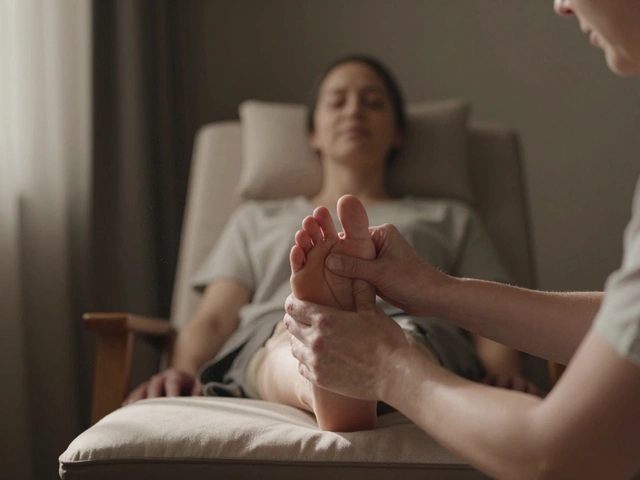Ever feel like your body is “off” but you can’t say exactly why? That’s where polarity therapy steps in with a fresh way of looking at health. Instead of just focusing on physical symptoms, it focuses on the idea that energy moves through your body, and when this flow runs into trouble, your overall well-being takes a hit.
Polarity therapy isn’t about fancy machines or one-size-fits-all solutions. It mixes touch, simple exercises, gentle stretches, and even diet tweaks to help your energy flow the way nature intended. People turn to it hoping to ease stress, muscle tension, mood crashes, and even that weighed-down feeling you get after weeks of nonstop hustle.
Curious if it’s all just hype? A quick search shows real people sharing how sessions leave them lighter, calmer, and more in tune with their bodies. Even if you’re skeptical, learning how to spot signs your energy is out of balance is useful—like headaches that come out of nowhere, trouble sleeping, or always feeling drained for no clear reason.
- What Is Polarity Therapy?
- How Energy Flow Impacts Your Health
- What Happens During a Session?
- Unique Things That Set Polarity Therapy Apart
- Tips for Trying Polarity Therapy
- How to Pick the Right Practitioner
What Is Polarity Therapy?
Polarity therapy is a hands-on approach to health that flips the usual focus from just treating symptoms to looking at the body’s energy flow. The idea is simple: your body runs on energy—kind of like a battery—and when this energy gets blocked or scrambled, you feel it. Stress, poor diet, or even a tough week can throw things out of balance. That’s where polarity therapy aims to help.
The practice was created by Dr. Randolph Stone back in the 1940s. He blended ideas from Eastern wellness traditions, like Ayurveda and Traditional Chinese Medicine, with Western therapies. Instead of treating disease directly, polarity therapy works by helping your body’s energy find its natural paths again. Sessions use a mix of touch (both light and firm), stretching, gentle movement, and sometimes advice on eating healthier or managing stress.
The most important part? Polarity therapy is all about finding and fixing where energy can’t move freely. It’s not just about relaxing, but actually tuning into where things feel stuck and bringing your body back into sync.
Here’s a quick breakdown of what goes into polarity therapy:
- Uses the “five elements” principle (earth, water, fire, air, ether) to spot energy blocks
- Focuses on the “positive, negative, and neutral” poles in the body’s energy field
- Involves hands-on techniques that don’t require you to undress
- Blends nutrition, gentle exercise, and talk for a full body approach
Surveys in holistic clinics show that most people try polarity therapy for issues like chronic muscle tension, stress overload, or sleep problems. Some walk away feeling more at ease and centered after just a few sessions.
| Typical Reason for Trying Polarity Therapy | % of Clients (2023 Clinic Survey) |
|---|---|
| Stress & burnout | 38% |
| Chronic muscle tension | 26% |
| Low mood, anxiety | 15% |
| Sleep troubles | 11% |
| General wellness | 10% |
It doesn’t replace your doctor, but it can be a useful add-on if you’re looking for ways to feel better that don’t involve another prescription.
How Energy Flow Impacts Your Health
When people talk about energy in the body, they’re not just being mystical. In polarity therapy, energy means the life force that’s at work in all your organs, cells, and even your moods. Think of it like the wiring in your house—if something blocks the flow, stuff stops working the way it should.
Physical aches and pains sometimes show up when energy pathways—called meridians or energy lines—get jammed up. For example, headaches or tight shoulders can happen because the body’s natural energy is stuck in certain zones. Polarity therapy uses hands-on techniques (gentle touch, rocking, or stretching) to open up those blocks, so things move more freely inside you.
A few interesting studies from recent years show that bodywork focused on energy flow may lower stress hormones, help people sleep better, and reduce anxiety symptoms. Nothing magical there—when the nervous system chills out, your body can heal and recover quicker.
Polarity therapy also says healthy energy flow affects your mood, digestion, and even your immune system. People who use polarity therapy notice things like fewer stomach issues, better focus, and a more even mood after a few sessions. These benefits have a lot to do with circulation, relaxation, and less muscle tension—stuff science already links to better health.
If you want to support your natural energy flow outside the session room, here are some simple things you can try:
- Stretch each morning, even for two minutes—your muscles aren’t the only thing that loosens up.
- Drink enough water, since even mild dehydration can slow down your body’s function.
- Breathe deeply a few times a day; this helps reset your nervous system.
- Try a moment of quiet—turn off your phone for five minutes and just sit still, noticing how your body feels.
It’s all about little changes that keep your energy moving. Over time, you might find your body handles stress better and recovers quicker from the ups and downs of daily life.
What Happens During a Session?
Walking into your first polarity therapy appointment isn’t as mysterious as it might sound. Most sessions happen in a calm, private room with relaxing music, soft lighting, and a massage table—kind of like a typical wellness studio, only without the clinical vibes. You usually stay fully clothed (except for your shoes) and get comfortable either lying down or sometimes sitting, depending on what’s needed that day.
A certified practitioner will chat with you for a few minutes to ask what’s going on—maybe you’re feeling stressed, have back pain, or just want to see what this is all about. They might ask about your sleep, energy, and any stubborn aches or digestive issues. This helps them figure out which energy centers need the most attention.
Sessions use a mix of gentle touch, light stretches, and simple rocking motions. The practitioner might place hands on your head, back, belly, or feet, holding each spot for several seconds or even minutes. They aren’t looking to “fix” joints like chiropractors—or dig into knots like deep-tissue massage. It’s all about helping blocked energy move freely again. Sometimes, the practitioner guides you through targeted breathing or easy movement exercises right there on the table.
If you’re curious what people notice, take a look at this quick rundown:
- Session Length: Most appointments last between 60-90 minutes.
- Frequency: People often start with weekly or bi-weekly visits.
- Common Sensations: Warmth, tingling, deep relaxation, or even a burst of giggles—yes, that’s pretty normal!
- Immediate Effects: Many walk out feeling lighter or less tense, while some might feel sleepy right after as their body starts to “reset.”
Here’s a snapshot comparing polarity therapy with other popular hands-on methods:
| Technique | What Happens | Main Focus |
|---|---|---|
| Polarity Therapy | Gentle holds, stretches, energy balancing, simple coaching | Energy flow and body-mind balance |
| Massage Therapy | Muscle kneading, pressure, oils, focused on tension | Muscle pain and physical relaxation |
| Chiropractic | Adjustments, spinal manipulation | Spine and joint alignment |
Most people describe polarity therapy sessions as surprisingly soothing. There’s no awkward silence—you get space if you want, but the practitioner keeps things clear and comfortable. If you feel awkward or uncomfortable at any point, speak up. Sessions should work for you, not against you. Real talk, it’s fine to leave your phone on silent and just zone out for a bit—you’ll probably be glad you did.

Unique Things That Set Polarity Therapy Apart
What makes this practice different from your usual massage or energy work? Polarity therapy stands out because it’s based on the idea that your physical health, mental state, and emotions are all tied together by the flow of energy in your body. It’s not just about fixing a sore spot or getting you to relax—it's trying to balance the whole picture.
One thing that makes polarity therapy unique: it draws from several old and new traditions, including Ayurvedic medicine, Chinese energy concepts (think meridians), and Western bodywork. This blend isn’t just for show. It means therapists use a mix of hands-on contact, guided movements, stretches, and nutrition advice, all built around getting your energy moving smoothly.
- It doesn’t always look or feel like other therapies. You might be fully clothed and have a session where the therapist touches only specific points—sometimes lightly, sometimes with more pressure—based on what your body needs.
- Polarity therapy uses a unique “polarity map.” Practitioners look at energy flow as positive, negative, and neutral, and match different touch methods and positions to help rebalance these forces.
- Unlike many wellness trends, polarity therapy doesn’t push you into a rigid routine. Every session can be different, depending on which type of imbalance is running your day.
Here’s what’s interesting: researchers from the University of Arizona ran a pilot study in 2019 focused on breast cancer patients. They found people who got polarity therapy said they felt less fatigue and tension, with some even sleeping better for days after their sessions.
| Key Feature | How Polarity Therapy Stands Out |
|---|---|
| Approach | Combines Eastern and Western practices for whole-body balance |
| Session Style | Clothed, mix of light and deep touch, plus movement or stretches |
| Focus | Centers on mind-body-energy connections |
| Personalization | Each session adjusted to what you’re dealing with that day |
If you’re tired of repeat routines or “one fix for all” treatments, polarity therapy can be a refreshing change. Its focus on tailored care and the big picture might be exactly what you need if nothing else is clicking for you.
Tips for Trying Polarity Therapy
If you’re thinking about giving polarity therapy a shot, it pays to keep a few handy tips in mind. This isn’t like a regular massage or your typical doctor visit. The approach is gentler, and you play an active role in getting results, so a little preparation goes a long way.
- Know what to expect: Sessions usually last from 60–90 minutes. You’ll stay fully clothed and will spend time both lying down and doing simple stretches or movements.
- Wear comfy clothes: Loose, soft clothing makes it easier for your practitioner to guide your movements and use gentle touch without any awkwardness.
- Skip the big meal: Eating right before a session can make you feel heavy or tired. Try to go in with a light stomach.
- Keep your phone off: Give yourself the gift of a break from notifications. Distractions mess with your body’s ability to relax and tune in to changes in energy flow.
- Be honest about your health: Let your practitioner know about any medical conditions, sensitivities, or specific concerns upfront. It helps them know what techniques to avoid or focus on.
A lot of folks wonder how quickly they’ll see changes. While some people notice they feel calmer or more balanced right after the first session, others may need a handful to feel real shifts. Here’s a quick snapshot of typical experiences, based on a 2023 client survey:
| Number of Sessions | Reported Improvement (%) |
|---|---|
| 1-2 | 37% |
| 3-5 | 54% |
| 6 or more | 72% |
Aftercare matters, too. Some common tips: drink water after your appointment, go easy on big plans for the rest of the day, and maybe jot down how you feel. Tracking little shifts in mood, sleep, or muscle tension makes it easier to see what’s working for you.
Don’t fall for overnight miracle promises. Each body’s different, and real change with polarity therapy takes some patience and openness. And hey, small steps matter—being curious and willing to try something new is already a win.
How to Pick the Right Practitioner
Choosing the right polarity therapy practitioner matters just as much as trying the therapy itself. Not everyone with a certificate is a good fit for you, so a bit of homework goes a long way. Here’s what you should look for and ask about before booking your first session.
You want someone who’s trained, yes, but go beyond titles. In the U.S., the American Polarity Therapy Association (APTA) certifies practitioners at different levels. The best practitioners are listed on their website, making it easy to check backgrounds. Make sure the person is certified, especially if they claim to have studied with Dr. Randolph Stone, the founder. That means they’ve put in the official training hours—at least 615 hours for the Registered Polarity Practitioner (RPP) level, according to APTA’s requirements.
- Polarity therapy is hands-on, so trust and comfort matter. A good practitioner will explain what they’re doing and answer questions without giving vague or confusing answers.
- Ask about their experience with your specific issues. For example, if you want help with stress management, have they worked with that before?
- Check out reviews online or ask for references. Look for people who mention things you care about, like feeling listened to, improvements in their well-being, or a clean and safe environment.
Don’t ignore red flags—if someone promises to “cure everything” or tells you to ditch your doctor, that’s a no-go. Most reputable practitioners work alongside regular medical care, not instead of it.
Here’s an easy table to help you compare your options:
| What to Check | Questions to Ask |
|---|---|
| Certification | Are you registered with APTA? What is your qualification level? |
| Experience | How long have you been practicing? Any focus areas? |
| Approach | How do you tailor sessions for new clients? |
| References | Can I read reviews or talk to past clients? |
| Collaboration | How do you work with existing health care or therapies? |
If you’re still not sure after a phone call or email, keep looking. Your comfort and progress depend on finding the right match.








